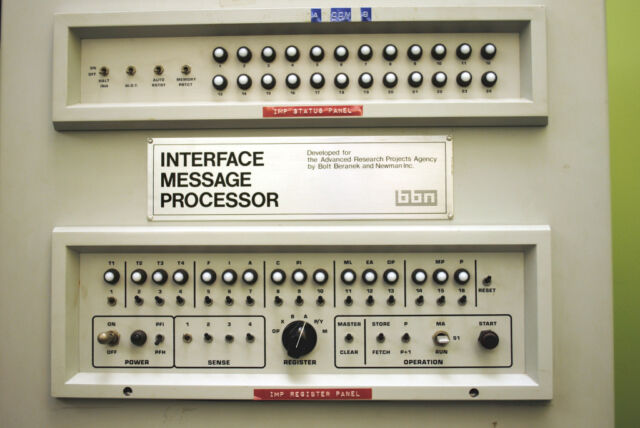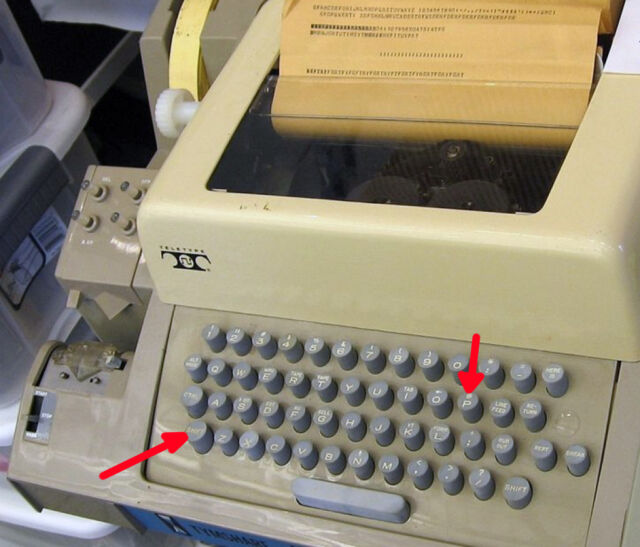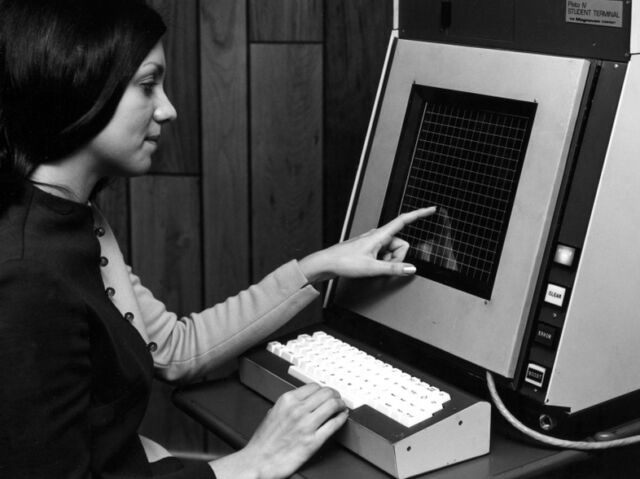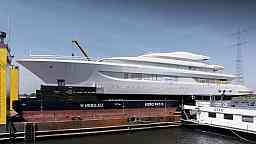People have been leaving public messages since the first artists painted hunting scenes on cave walls. But it was the invention of electricity that forever changed the way we talked to each other. In 1844, the first message was sent via telegraph. Samuel Morse, who created the binary Morse Code decades before electronic computers were even possible, tapped out, “What hath God wrought?” It was a prophetic first post.
World War II accelerated the invention of digital computers, but they were primarily single-use machines, designed to calculate artillery firing tables or solve scientific problems. As computers got more powerful, the idea of time-sharing became attractive. Computers were expensive, and they spent most of their time idle, waiting for a user to enter keystrokes at a terminal. Time-sharing allowed many people to interact with a single computer at the same time.
Part 0: The Precambrian era of digital communication (1969–1979)
Soon after time-sharing was invented, people started sending messages to other users. But since every computer spoke its own unique machine language and had its own way of storing and retrieving data, none of these machines could talk to each other. The solution to this problem came out of the Pentagon’s Advanced Research Projects Agency (ARPA), and was thus dubbed the “ARPANET.” When two different computers connected to each other through an “IMP” (Interface Message Processor, the first router) in 1969, it was a massive breakthrough.
[
Now, instead of sending a message to a friend who was probably sitting next to you in the same computer lab, you could send it to someone in a different city. In 1971, Ray Tomlinson wrote the first inter-computer messaging program, SNDMSG. Because he had to differentiate between the receiver’s username and the name of the computer they were using, he needed a character that wouldn’t be part of either. He hit “SHIFT-P” on the Model 33 Teletype, got an @, and the rest was history. Email was born.

The friendly orange glow
At around the same time, a self-contained computer network called PLATO was also changing the world. PLATO was an educational system that began in 1960 and was nearing its fourth iteration. It was responsible for many computer firsts, such as the first flat-screen plasma display, which launched in 1972 with PLATO IV. These touch-enabled, 512×512 graphical displays looked like they came from the future. And while it couldn’t talk to ARPANET, every PLATO user at every terminal could communicate with each other all over the world.

In 1971, PLATO was the home of the first “phishing” scam, when student Mark Rusted created a fake login screen that stole users’ passwords. (He was politely asked not to do it again.) Because of this, the next revision of PLATO added a special keystroke combination, SHIFT-STOP, that would guarantee that the user saw a real login screen. Years later, Microsoft would use the same idea for Windows NT with CTRL-ALT-DEL.






























